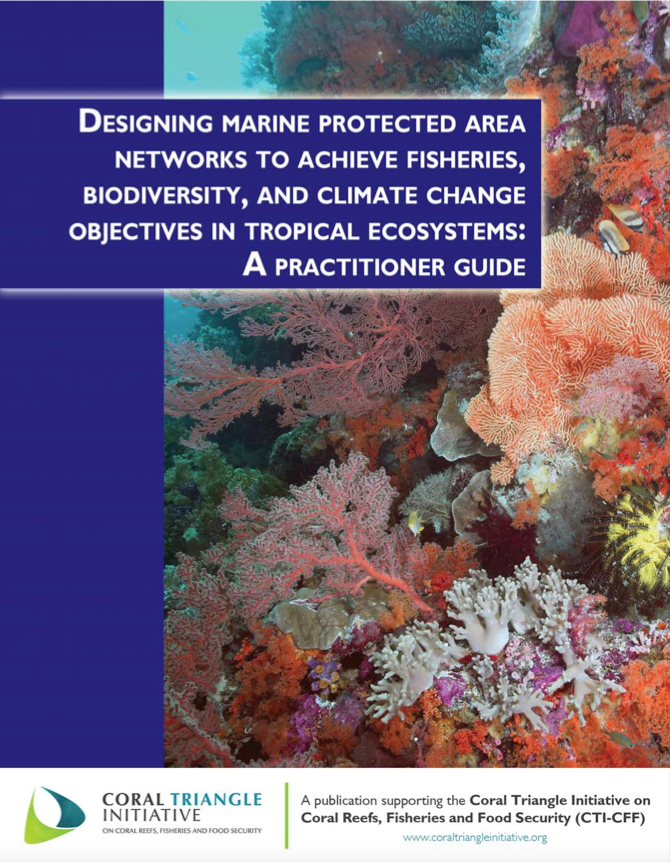Resilient MPA Design
Well-designed and effectively managed MPAs play a significant role in achieving sustainable use of marine resources at multiple scales. ref Increasingly, resilient networks of MPAs are being implemented to increase conservation benefits across broader areas and to spread the risks of potential loss of biodiversity in any one area. The scaling up from individual MPAs to resilient MPA networks allows for the protection of species and habitats in addition to the maintenance of ecological processes, structure, and function.
This section introduces coral reef managers to key resilience principles and recommendations to support the development of resilient MPA networks. These principles can help MPA networks achieve multiple objectives, including fisheries sustainability, biodiversity conservation, and ecosystem resilience in the face of climate change and other threats. These principles and recommendations can be applied to existing MPAs or used for planning future MPA networks and can be applied at any scale. Incorporation of these recommendations provides the best chance that reefs within a MPA will survive disturbances and continue to provide essential goods and services to communities.
What are MPA Network Design Principles?
Principles of resilient MPA design provide guidance on how to design a resilient MPA or MPA network. Biophysical and socioeconomic principles are commonly used to inform MPA design and management. Biophysical principles are aimed at achieving biological objectives by taking key biological and physical processes into account; whereas socio-economic principles are aimed at maximizing benefits and minimizing costs to local communities and sustainable industries.
This section describes principles of resilient MPA design that integrate fisheries, biodiversity, and climate objectives.
DESIGN RECOMMENDATIONS
It is recommended that managers aim to implement resilience principles as comprehensively as possible and prioritize the prohibition of destructive activities and risk spreading through representation and replication of habitat types. Recommendations regarding minimum size and spacing of MPAs and protecting critical areas can often be implemented with less information.
There are often information gaps, and cultural and political factors that prevent full application of all design recommendations. However, the application of those principles that are feasible increases the likelihood of protecting the entire range of unknown species habitats, and processes of importance; and thus, supporting resilience in response to disturbances.
Specific design recommendations from Designing Marine Protected Area Networks to Achieve Fisheries, Biodiversity, and Climate Change Objectives in Tropical Ecosystems: A Practitioner’s Guide are found in the following sections. This guide provides an integrated set of biophysical principles to help practitioners design networks of resilient marine protected areas to achieve objectives such as fisheries sustainability, biodiversity conservation, and ecosystem resilience in the face of climate change.

